#1990s body glitter
Explore tagged Tumblr posts
Text

Naturistics Body Glitters in in Stardust and Angelic and Lip Sparkles Lip Gloss in Kiwi, Passion Fruit and Strawberry
late 1990s-early 2000s (does anyone know a more exact year?)
Found on Ebay, user cassiecosmetics
#naturistics#1990s naturistics#y2k naturistics#naturistics body glitter#naturistics lip gloss#1990s glitter lip gloss#1990s body glitter#y2k glitter lip gloss#1990s glitter#1990s kids#1990s nostalgia#1990s beauty#y2k beauy#y2k nostalgia#early 2000s nostalgia#early 2000s glitter#early 2000s glitter lip gloss#early 2000s body glitter#kiwi#passion fruit#strawberry#1990s strawberry lip gloss#y2k strawberry lip gloss#1990s kiwi lip gloss#y2k kiwi lip gloss#1990s cosmetics#1990s makeup#early 2000s makeup#y2k makeup#naturistics strawberry lip gloss
5 notes
·
View notes
Text
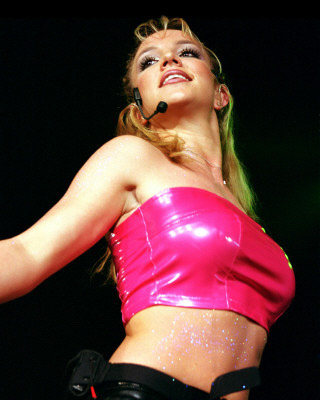
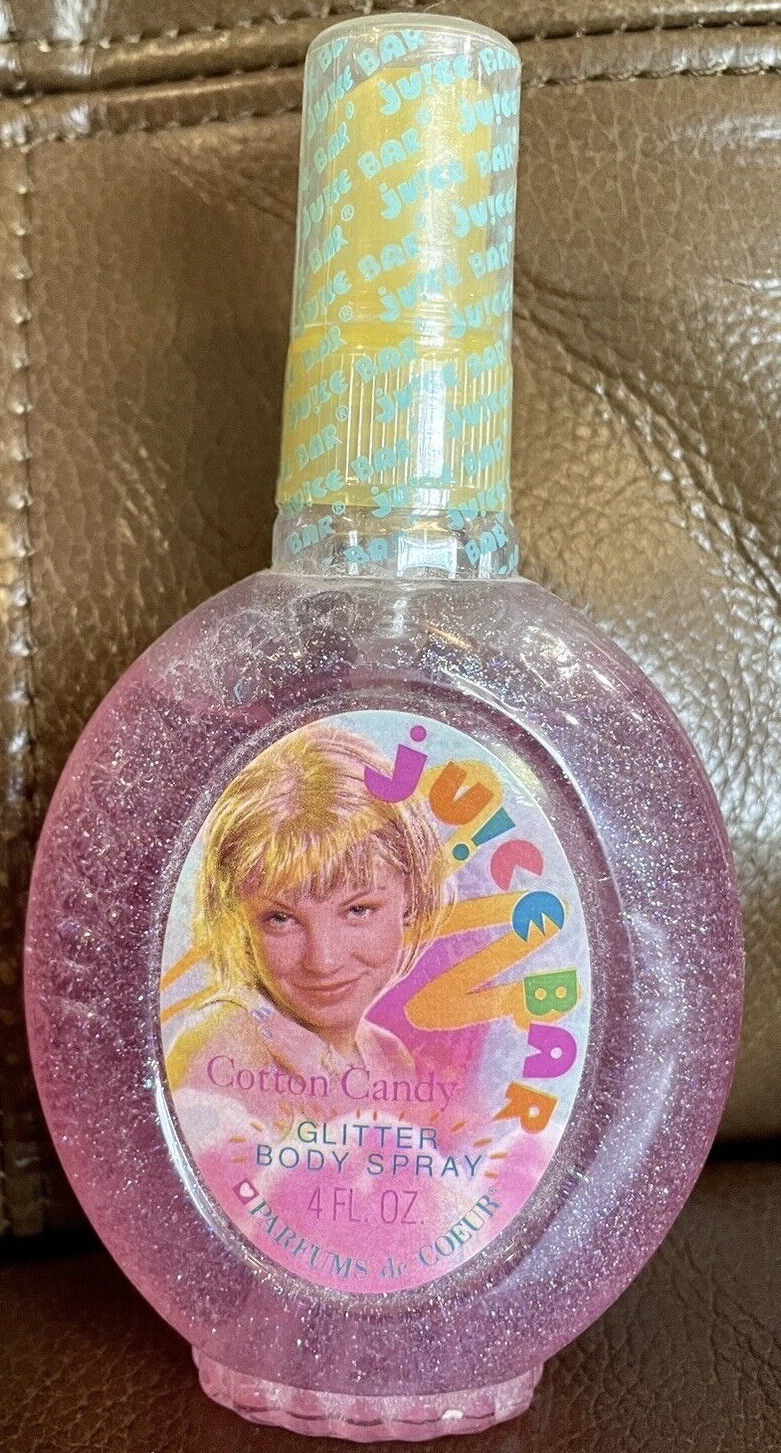
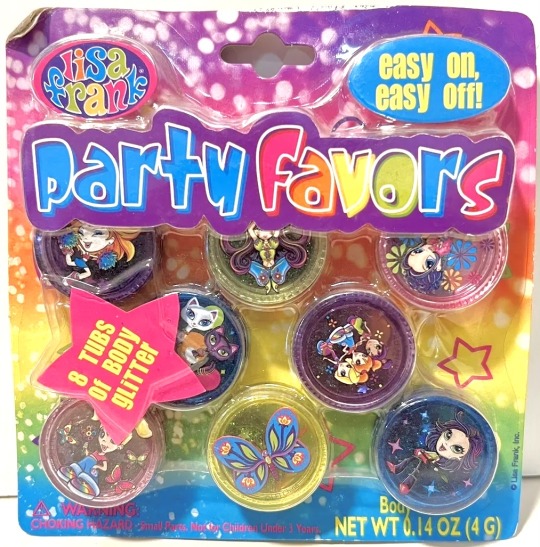
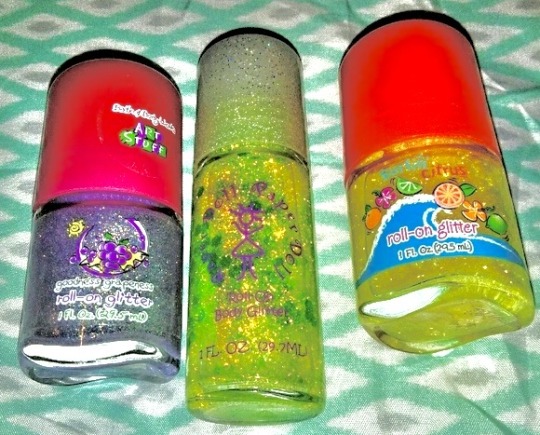

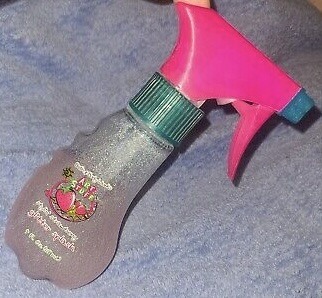


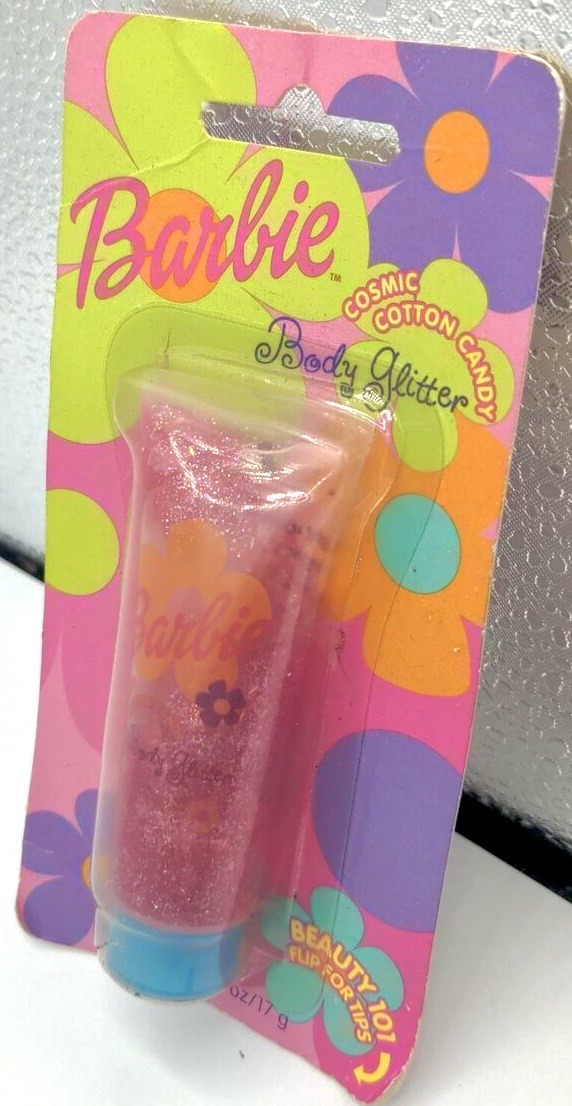
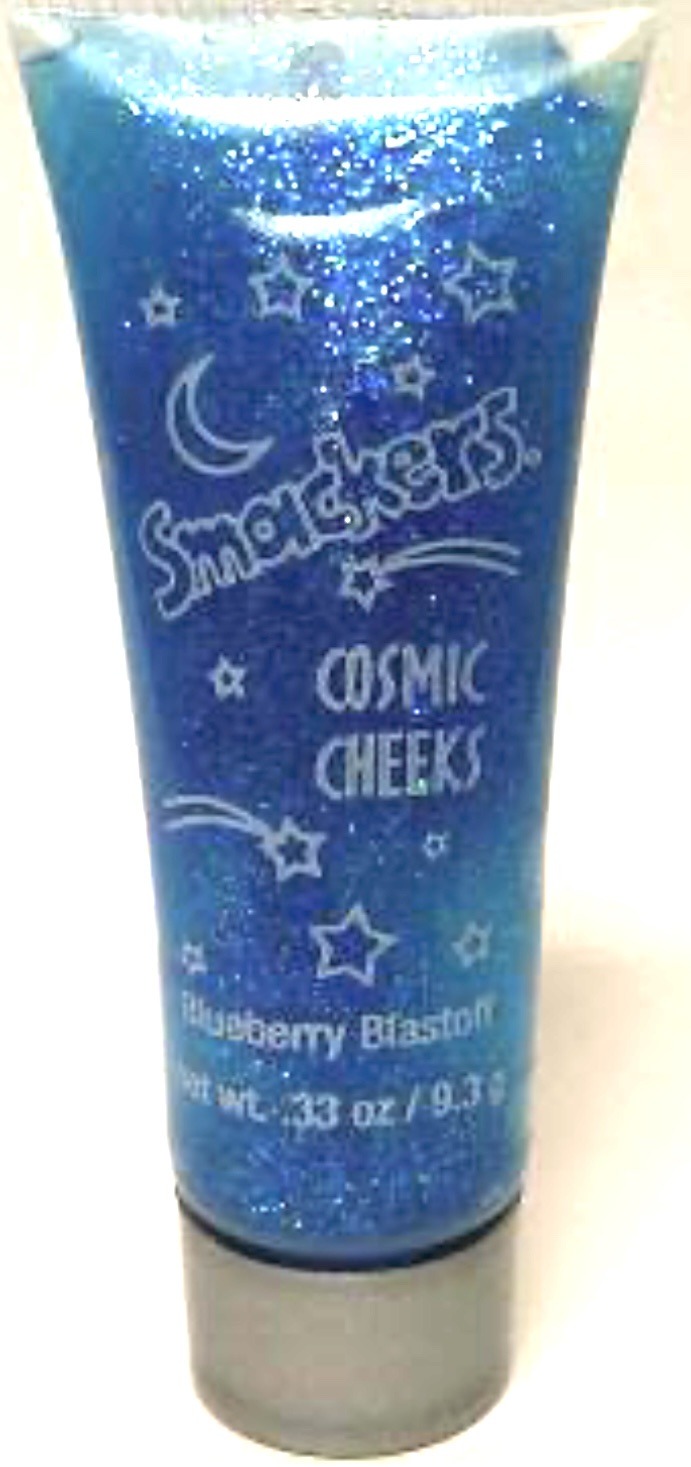
1990s - 2000s Body Glitter Trend
#Britney spears#body glitter#bath and body works#Barbie#bon bon#90s#90s cosmetics#cosmetics#lip smackers#street wear#Lisa Frank#y2k#2000s#00s#2000s nostalgia#2000s kids#2000s style#y2k nostalgia#y2k aesthetic#y2k style#2000s kid#1990s#00s nostalgia#00s aesthetic#y2kcore#y2k trends#90s trends#00s trends#2000s trends#trends
2K notes
·
View notes
Text
An Analysis of the Ubiquity of Mall Brands in the late 1990s to early 2000s, or
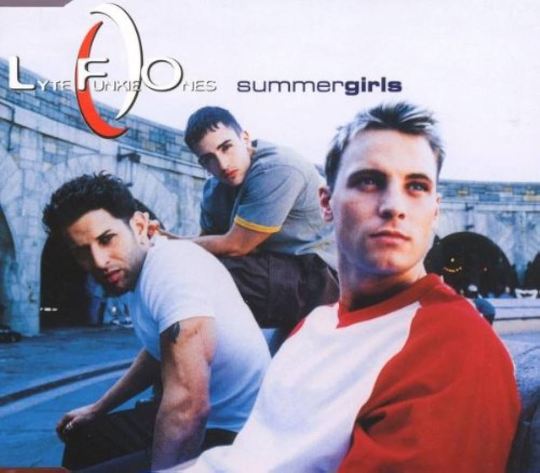
I Fucking Hate These Guys
by OMG!thatdress
If you were a tween to teenager from roughly 1997 to 2004, chances are, you were left with profound life-long trauma caused by someone wearing Tommy Hilfiger, Abercrombie & Fitch, Ralph Lauren, Nautica, American Eagle, The Gap, Old Navy, or, if you were came along a little later, Hollister or Aeropoastale.
I cannot overstate to my young followers how over-saturated these brand names were in teen culture at the turn of the millennium, the extend to which EVERYONE was wearing them, and yet, in a weird way, how light the imprint they actually left on fashion history was.
Watching iconic teen shows of the era, you don't see any of them because a.) TV teenagers tend to be way cooler and more stylish than awkward and desperate real teenagers actually are, and b.) these brands were all copyright protected, which kept their names and logos off the airwaves.
Look in a middle school yearbook, however, you'll see it. Look at your aunt and uncle's high school photo albums, you'll see it. Ask any late Gen X or early Millennial. It was real and it was fucking awful.
The big question is why? Why? WHY, GOD WHY?! There's a lot of answers to that question.
First of all, I'm going to cite this absolutely wonderful article from Collector's Weekly about why everyone's grandma had a hideous orange couch in the 70s, and give the most simple and straightforward answer: it's what was available.
This is when the concept of online shopping is still very much in its infancy, and the hub of American consumer culture was still your local mall. If you needed new clothes, you went to the mall. And guess what stores were at every local mall? You guessed it.
For the second answer, I'm going to dig up this utter relic from the early days of internet meme-ing, that has nonetheless stuck with me and had a profound impact of my understanding of how popular fashion works:
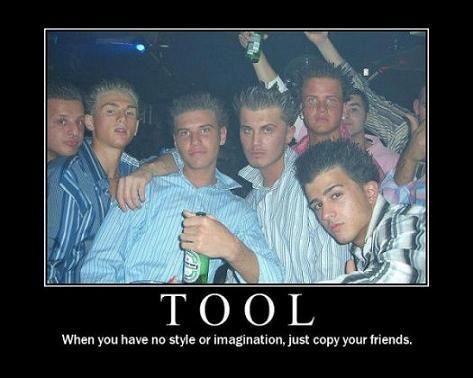
I'm pretty sure that the reason Abercrombie & Fitch manages to survive as a brand today rests solely increasingly middle-aged Millennial men whose sense of style has refused to evolve past the shit their mom bought them in high school.
And why the hell would they? Nobody wore Abercrombie because it made them stand out or feel special. I'm still pretty convinced that nobody actually *liked* the aesthetic or thought the clothes actually looked good. You need not look past the basic color palette to understand these were not brands meant for uniqueness or self-expression.

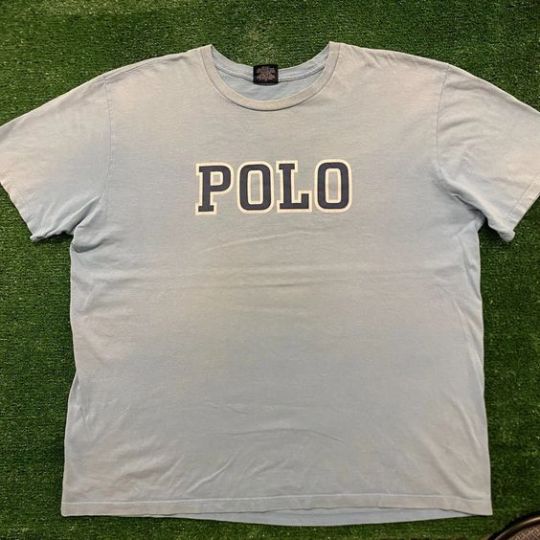
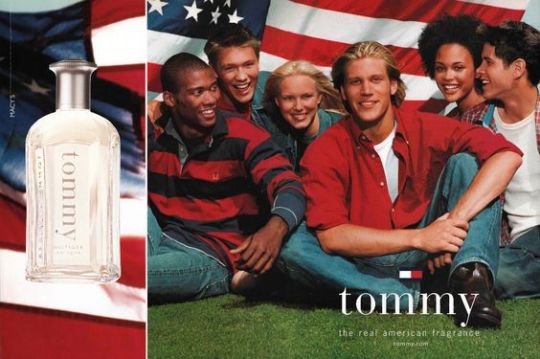
While Britney Spears pranced around stage in her iconic neon colors and body glitter, American teenagers existed in a never-ending hellscape of washed-out neutrals, faded denim, and American flag primary colors.
All of which served its exact purpose: it was safety. It was a way to appear cool if you didn't want to go through the ordeal of actually having a personality or a sense of style. Which, of course, goes back to point number one: it was just shit you bought at the mall because you needed clothes.
It wasn't enough to save you once the school bully caught that whiff of autism and/or queerness on you, but it was enough that you could blend into the herd and pray no one ever noticed you.
Underneath it all was a very subtle undercurrent of class and classism: to wear mall brands was to declare to the world that you could indeed afford to shop at the mall. It meant you weren't, god forbid, poor.
Status symbol clothing goes back to the invention of clothing itself. The concept of brands as status symbols is still very much alive and well, its just more limited to actual luxury brands nowadays. One need look no further than your favorite high-end children's clothing website to see that rich parents still very much think it important that you know their five-year-old is wiping its boogers on Versace.
None of these brands were actual high-end luxury brands, but they still advertised and presented themselves as such. Their ads featured signifiers of "all-american" (read: White) wealth: yachts, skiing, horses, beaches, shirtless dudes with chiseled abs playing verious sportsballs.

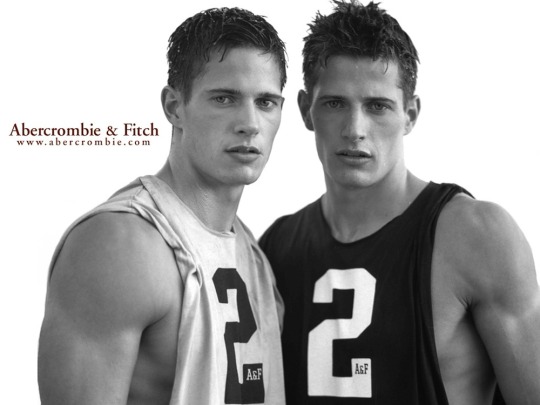
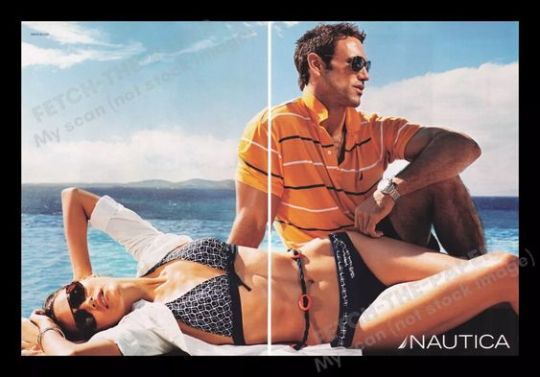
The color palettes and cuts mimicked the preppy "Ivy" style of the New England old-money elite, along with their hobbies and lifestyle. You may not actually own a horse, but you can wear a polo shirt. You may not be able to run without breaking your ankle, but you wear the same shirt as the dude holding a football in the ad.
It was an elitist, White and skinny image that didn't age well into the diversity and body-positivity of the 2010s.
In 2003, a lawsuit was filed against Abercrombie & Fitch alleging systematic racial discrimination. People of color were rarely hired, and if they were, they were given jobs in the back, away from customer view. In 2005, the U.S. district court approved a settlement of $50,000. A few years ago, Netflix released the documentary White Hot: The Rise and Fall of Abercrombie & Fitch which admittedly I haven't watched yet because my hatred runs too deep to remind myself of its existence.
youtube
It was a hatred of Abercrombie & the (white, thin, neurotypical, heterosexual) conformity that it represented that drove me screaming into the loving arms of Hot Topic and Linkin Park. Jordan Calhoun wrote an excellent article for the Atlantic about his experience growing up poor and Black and not fitting in to the Abercrombie aesthetic.
I would be very remiss if I didn't bring up the "urban" mall brands of the early 2000s: Fubu, Sean Jean, Ecko, Baby Phat, among others. They were favored by Black teenagers and White teenagers who wanted to be Black. I know there's a lot to be said about these brands, but I'm too Caucasian to really be able to talk about them with nuance. Maybe someone else will, and I will be very happy to listen.
As much as I hate Tommy Hilfiger, I really do have to give him credit for recognizing the incredibly lucrative "street wear" market and selling power of hip-hop. While most of these mall brands kept their image sparkling White, Tommy made Aaliyah his brand ambassador and regularly appeared in the wardrobes of popular rap and R&B artists of the time.
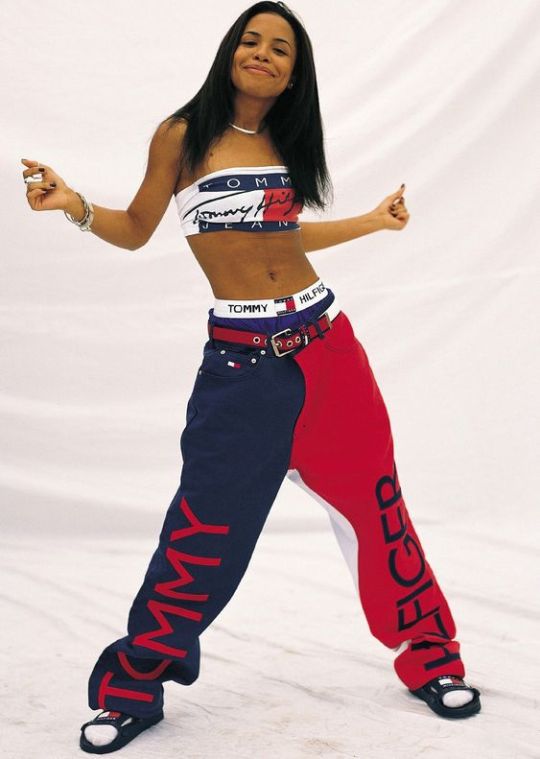
It'd be very easy and very reductive to say that the changing ideology of the 2010s was the downfall of preppy mall brands, but really, the thing that truly killed them was the downfall of the mall itself. Shopping habits changed, and logos and brand names no longer held the power they once had.
The moral of the story is that being a teenager is fucking hell, and these popular brands both offered the safety of conformity and a status symbol to hold over the heads of the poor and uncool. The irony is that everyone who hated them as teenagers (read: ME) and the freaks who grew up to truly love the power of self-expression through personal style (read: ME) became the truly cool people. If you wore Abercrombie you grew up to vote for Donald Trump.
GO GOTH. PREPS SUCK. THE END.
959 notes
·
View notes
Note
Do you have anything for high school cheerleading? Tips on writing sports-related work would be appreciated as well. Thank you!
Writing Notes: Cheerleading
Cheerleading - team activity in which elements of dance and acrobatics are combined with shouted slogans in order to entertain spectators at sporting events and to encourage louder and more enthusiastic cheering.
Once exclusively a sideline activity geared toward supporting school sports, cheerleading has gained recognition as a sport in its own right and often operates outside the school context altogether.
HISTORY OF CHEERLEADING
Although cheerleading is today predominantly associated with femininity, the original cheerleaders were men.
Cheerleading was connected to the emergence of gridiron football at Ivy League colleges and universities in the United States in the mid-1800s, and the growth and formalization of cheerleading paralleled that of football.
The first organized cheerleading squad was formed at the University of Minnesota. The squad, consisting of 6 male students, was tasked with leading crowd cheers and chants at football games.
Over the latter half of the 19th century, as attendance at college games grew, large stadiums were constructed, and spectators were distanced from the playing field.
Cheerleaders—or “yell leaders,”—led cheers from the sidelines both to encourage the spectators and to serve as a form of crowd control.
Cheerleading remained a male activity until the early 20th century when women began to participate (and the first megaphone was used), leading to the formation of the first all-female cheerleading squad at the University of Minnesota in 1923.
The megaphone made it easier for the spectators to recognize and take up the battle cries. With the entry of women, the nature of cheerleading changed:
Gymnastics, dance and even acrobatic elements were incorporated into the program, and cheerleading was introduced into high schools.
CONTEMPORARY CHEERLEADING
Cheerleading remains “feminine” not only in terms of its supportive sideline function but also in the performance and appearance demands placed on women:
short skirts
hair ribbons
makeup
the expectation to smile constantly and express enthusiasm
Competitive cheerleading - even more highly feminized than sideline cheerleading insofar as there is a heightened emphasis on showmanship and performativity.
Although there are stylistic variations among the cheerleading companies that oversee competitions, competition routines are typically:
loud,
fast, and
energetic.
They exude glitz, glamour, and glitter, particularly in the all-star context: bows are extra large, makeup is extra sparkly, and dance moves are brash and sexy.
Since the 1990s, “alternative” forms of cheerleading have emerged alongside the mainstream variants discussed above.
An extensive national network of adult LGBTI (lesbian, gay, bisexual, transgender, and intersex) teams (modeled after Cheer San Francisco, the oldest and largest) perform at community and gay pride events, and “radical cheerleaders,” groups of young feminist activists, use cheerleading as a vehicle for protesting social injustice.
Although less popular and less visible than mainstream cheerleading, such alternative groups similarly use the energy, spirit, and performativity of cheerleading to communicate with and influence audiences.
THE WARM UP
The warm-up involves moving the whole body, as well as individual joints. It consists of 4 main functions:
Warming-up
Preparation
Preventing injury
Building team spirit
STRETCHING
Over time, the following 2 stretching techniques have prevailed:
Active stretching - a self-directed stretch, i.e. a muscle is stretched because its antagonist is working.
Passive stretching - an other-directed stretch, i.e. it requires an external influence, e.g. a partner, piece of equipment, etc.
Both techniques can be further divided into static and dynamic stretching.
Basically, you should stick to the following points when stretching:
Always stretch calmly and gently
Always concentrate on the muscle being stretched
Always breathe regularly and calmly, increase the stretch when exhaling
Stretching should never be painful
The practice area temperature should be comfortable
MOTIONS
Motions - form the basis of many important cheerleading movement patterns.
High V - Arms are stretched above the head in a V shape.
Low V - Arms stretch downward to form an upside-down V.
T-Motion - Arms are stretched out to the sides; arms and body form a T shape.
Half-T - Arms are still at shoulder height, but in this motion, they are bent at the elbows instead of being fully extended to the sides.
Touchdown - This motion is so-called, because the football referee performs the same action after a touchdown. The cheerleader touchdown motion is, unlike that of the referee, performed with locked arms. Extend the arms above the head, with the upper arms almost touching the ears. The hands can form a fist or a blade, the important thing is that the palms of the hands face each other.
Right Diagonal - The right arm hits a High V and the left arm a Low V. The arms should form a straight line from the right fist to the left fist.
Left Diagonal - The left arm hits a High V and the right arm hits a Low V. The diagonal runs from top left to bottom right.
Right L - The arms form an L-shape. The right arm is in the Touchdown position and the left arm is in the T position.
Left L - The left arm is in the Touchdown position and the right arm is in the T position.
Punch - The right arm hits the Touchdown position close to the right ear and the left hand is placed on the left hip. The left hand forms a fist and the back of the hand faces forward.
Clap - The hands are held in the blade position and pressed together. The fingers are together and the hands are flat. The elbows are held close to the body.
Clasp - The hands clasp each other when they touch. The elbows are kept close to the body.
You can combine the motions together, thus giving new variations.
CHANTS
Chant - a combination of words and actions.
It is a kind of speech song consisting of very few words, used for encouragement.
Unlike cheers, chants can be shouted spontaneously throughout the game.
The crowd is supposed to shout the chants along with the cheerleaders, to support the team. The cheer team shouts the chant once by themselves and the second time, the crowd ought to join in. Examples:
"Defense Go!"
Defense: Take one step to the right with the right leg, then slap your thighs twice, shouting “DE-FENSE.” Lean forward slightly.
Go: On the word "Go," bring the left leg in and the feet together and the arms perform the motions shown. After the word “Go” there is a short pause. This chant is now performed in the other direction, i.e., starting with the left foot.
"Go, Fight, Win!"
Go: On the word “Go,” perform the K motion to the left, with the head facing forward.
Fight: On the word “Fight,” bring the right leg in and hit a High V with the arms.
Win: On the word “Win,” bring the arms down from a High V to a Low V. Make a lunge forward onto the left foot. Bend both knees and distribute your body weight evenly over both legs.
CHEERS
Cheers - consist of a combination of words and movements.
Much longer than chants and are not repeated.
Always consists of several lines, most of which rhyme.
Not only longer than a chant but also has a completely different purpose.
Tell a short, appropriate story and cannot just be inserted during the ongoing game, unlike the chant.
Only performed during the official time-outs or before and after a game, i.e., during a pause.
This should always be observed, for during a cheer, the cheer team wants to ensure that they have the crowd’s full attention during the cheer. This can only happen during a break.
Should always have a positive message to motivate the crowd and the team.
Examples of Cheers
"Come on Team"
Come on: Step forward onto the right foot, keeping the back straight and leaning forward. Outstretched arms are crossed in front of the body, knees are bent.
Team: The left leg is pulled into the pose, the left foot is next to the right knee so that the left knee points forward. The right arm hits the Touchdown motion and the left hand is placed on the left hip. The left elbow points backward.
"Let's be Proud"
Let's be: Make a lunge forward onto the right leg, so that you are kneeling on one knee, while crossing the arms in front of the body, and bending the head toward the floor.
Proud: The arms are stretched up into the High V position. The upper body is straight and the head is raised. The tip of the right foot touches the ground.
JUMPS
The role of the cheer team is always to entertain the crowd and to provide a good show.
A well-executed jump is particularly eye catching, and a successful, well-synchronized jump is a real crowd-pleaser.
Jump Phases
Every jump can be divided into 4 phases, and the cheerleader must master all four.
Preparation
Lift
Execution
Landing
Examples of Jumps
Tuck - In this crouch jump, the upper body remains upright and the legs are tucked up toward the upper body, with bent knees. Make sure that the feet are together. Take off from and land on both feet. The arm position can be changed and means that the arms can be held in either the High V or the Touchdown.
Toe Touch - Extend legs to the side immediately after take-off, and tilt her hip forward. The legs should be brought up as high as possible, making sure that the knees face upward and not forward.
Pike - The legs should be parallel to the ground. Immediately after takeoff, the legs are raised and straight. At the same time, bend your chest toward your legs. Straighten the arms and touch your toes with your hands. Don’t deliberately try to touch the toes, as this can prevent you from jumping as high as possible. In the Pike, both feet are together for take-off and landing.
DANCE
Dance has become the most important component of cheerleading for many teams. These teams are called dance teams. Most commonly used dance styles:
Jazz
Hip-Hop
Funk
Novelty
Character
STUNTS
Stunts - the formation of pyramids of various sizes with at least two people.
Double stunts - usually carried out by two people.
Partner stunts - by 3-4 people
Pyramids - by as many people as desired.
These numbers do not include spotters, of course, who must always be present at any kind of stunt.
In every stunt, there are 3 different roles:
Base - the person who remains on the ground in a stunt; supports another cheerleader (the mounter) on her hands, shoulders, back, arms or legs
Mounter - the person who does not have ground contact during the stunt, as she is standing on one or more other people
Spotter - additional person who supervises the whole proceedings but does not take part in the stunt; always stands where the mounter could fall, and, when necessary, intervenes and catches the mounter
Every stunt consists of 3 phases:
Set up
Execution
Dismount
STYLING
Hair and make-up naturally help to create a unified appearance, and they are part of the dress code along with clothing.
Every team decides for itself which hairstyle the members want to wear and how they want to make themselves up.
It is not necessary for all team members to wear the same make-up, as skin type, face shape and eye color differ from one person to another, so it is difficult to find make-up that suits everyone.
Deciding on a certain lipstick color and the intensity of the make-up can already go some way to ensuring a unified look. But these decisions are made by the team and the coaches. There are also teams whose cheerleaders wear identical make-up, which is also fine.
The main thing is that everyone understands the decisions and that everyone is totally present. Presence shows as soon as you step onto the field or the stage.
OTHER ELEMENTS
Music
Formations
Props
Tumbling
Tips on Writing about Sport
Tell a story. Sport is all about what-happens-next – an open-ended form of storytelling in its own right, presenting rags-to-riches parables, fairy stories, farces, thrillers, tragedies and cautionary tales, sometimes all at once. Books about sport should aspire to the same sort of narrative excitement. Triumph and disaster should remain in play until the final whistle.
Tell a larger story. While the game, the race or the tournament is afoot, sport can seem all-encompassing. But the best books manage to place sport in a larger frame. Write sport as something that ripples beyond mere winning and losing.
Have a central character. Imitate the action of the traditional novel by narrating the trials and tribulations of an individual life. It is not easy for stories about team sports to attain the level of human drama that belongs to individual adventures.
Take us behind the scenes. Readers love to peek through the curtains of what we see on television to glimpse real stories, real voices.
Look behind you. Modern sports pages have become promotional vehicles: today’s newspapers describe tomorrow’s games. Live TV coverage has replaced ordinary reporting, leaving a gap in the market for detailed retellings. Sport is theatre, so dramatise, dramatise.
Write about sport as if it matters greatly – and also not at all. Its struggles are only figuratively life-or-death, and failure is just as gripping as success. It is in these gaps (between sport’s importance and its triviality) that irony and humour can take root and ripen.
Strive to avoid back-page jargon. Sports punditry is dominated by ex-pros who agree that everything is the referee’s fault, and articulate this in terms that have already been much parodied. So it is important to refresh the vocabulary. Not every opportunity has to be “golden”; not all penalties are “hotly disputed”. In fleeing from these, it is also important also to avoid the language of art criticism. Banging on about beauty, the sublime and the paradoxical sounds boastful when the subject is … darts.
Accept your niche. In the name of populism it is tempting to woo readers who don’t care for sport with populist or self-deprecating gestures. But aiming a book about motor racing or boxing at people who dislike such pursuits will only alienate those who might have enjoyed it, while failing to engage the attention of the non-interested. By the same token, never talk down to readers: safer to assume that they know more about this than you ever will.
Break some or all of the above rules, when necessary.
In sport, as in life, something is always hidden.
Sources: 1 2 3 4 ⚜ More: Writing Notes & References
Thanks for the request. This was so interesting, I learned a lot. Hope this helps with your writing!
#cheerleading#writing notes#on writing#writeblr#writing advice#writing tips#dark academia#character development#writing prompt#spilled ink#light academia#creative writing#literature#writers on tumblr#writing resources#finished most of the requests -- had a rough week but everything will be queued !!
53 notes
·
View notes
Text
Published: Oct 24, 2023
I was around 10 the first time my mother asked if I thought I was a boy.
There was a period from the 1970s-1990s where the concept “tomboys”, although perhaps originally intended as a derogatory term, provided a space for pre-pubescent girls to act, play and dress in ways that were not stereotypically coded feminine; in other words, some of the freedoms boys were granted. My mother clearly felt that raising a daughter and a son should be drastically different experiences. This was not largely the case, as I wanted to be just like my older brother.
Growing up, my parents had strict ideas around the roles of men and women in society. Men were “head of the household” and had the final say on decisions, as well as being the primary disciplinarian; women’s primary roles were as caregivers. My parents were religious, raising me in a religion where homosexuality was taught to be immoral and unnatural.
In some ways, I fulfilled many stereotypes of feminine attributes: being gentle, soft-spoken, and nurturing towards others. I enjoyed playing with dolls and soft toys; however I also had a keen interest in cars and transformers. As a painfully shy child, I preferred the company of fictional characters in books more than people; this level of social awkwardness alone cast me as “odd”.
However, what had been convenient and financially fiscal - hand-me-down clothing from my brother - had become my clothing of choice. I only wanted to wear “boys’ clothing”, much of which came in my favourite colour (blue) versus the bright warm colours of “girls’ clothing”. Having worn both, I had realised that boys’ clothing was looser fitting, had more flexibility of motion, and was more comfortable. I disliked glitter, sequins, lace and frills, none of which was found on boys’ clothing. As a very shy child who refused to wear the clothing supposedly designated for my sex, this often invoked commentary and disapproval from adults around my appearance and my body. Boys’ clothing, with its longer sleeves and longer torso, covered up more of my body; a body I was painfully aware that others were observing and judging, sometimes openly.
My mother had told me how excited she was when she learned she was going to have a daughter to “do girly things with”, fantasising of frilly dresses and ballet rehearsals. Instead, she had me. Although my parents allowed me to play with the same toys as my brother, pursue the same sport as my brother, and (eventually) choose my own clothing, my mother’s question showed that she still didn’t understand: “Do you think you’re a boy?” My mother, likely feeling that she had been short-changed around the perks promised with raising a girl, could not understand how her daughter, who declined most things coded feminine, could indeed be a girl who was comfortable with this fact. 10 year old me didn’t understand just how loaded the question was, but did find it strange and hurtful, replying, “No, I’m a girl” in a confused tone.
Thankfully, as the concept of “tomboy” was popular while I was growing up, this meant there was a known word that described the type of girl I was; one that allowed me to know that, no matter what I liked or did, I was still a girl.
There was another word that described the type of girl I was. I was around 8 the first time I heard the word “gay”. A boy slightly older than me had spit the word out, yelling at another child “I’m not gay!” This caught my interest. Although the word itself was unknown, the meaning had been clear with the derision and emphasis the boy had placed on the word, his face consorting in disgust as the word left his mouth. It must be something really bad was the clear impression.
I had the opportunity to quench my curiosity that same week. In line with other tasks that could be deemed naughty, looking up bad words in the dictionary required careful timing to when family members were distracted elsewhere. I timed my moment carefully and looked up “gay”, which naturally led to my learning the term “homosexual” - oh. Reading the definition, it was almost like a warm recognition spread across my chest, embracing me. I hadn’t known that homosexuals existed, but I was pretty sure I was one. After this, I would sometimes sneak out the dictionary just to read these words again; although just ink on paper, it was proof that other people like me existed.
I would later use this word - gay - against myself, turning it from something comforting and wonderful, to the same kind of contempt that shrouded the word whenever I heard others use it in real life. Laying in bed at age 11, I had prayed to not be gay, promising myself that I would never tell anyone about these feelings and grow up to marry a man. Although it had been fine when my feelings towards certain girls had just been an intense desire to be their friend and be near them, these feelings had become much harder to ignore now they had turned into more concrete thoughts, such as how beautiful a certain girl was, how shiny and luscious was her hair, and daydreaming around our hands accidentally touching. It was much harder to deny the very clear signs of a crush, particularly when all my female friends had crushes on boys. In order to fit in, I focused my energies on talking about how “cute” one of the boys in the class was - I had never interacted with him, however he had soft features and long eyelashes, and seemed gentle in nature. I would then go home and dream about my female friend and her lovely, long dark hair.
Coming into puberty, I had also started learning more about my religion’s views on homosexuality, specifically that it was immoral and unacceptable. This led to a lot of emotional hurt and confusion for me. At this point, homosexuals may as well have been mythical creatures, discussed by others, but never appearing as an identifiable person in real life.
* * *
Several years older, 15 year old me was struggling. Since puberty, I had been trying to push away any inkling of desire I had towards other girls.; it hadn’t worked. Now with slightly more understanding around the world and how I fitted into it, I had started the process of accepting that these feelings weren’t going anywhere and were, perhaps, just a normal part of me. I had also started considering that if I had been created with intent, as my religion taught, then no mistakes were possible, and my attraction towards girls, which had always been there in some form, was as natural and as similar as anyone else’s. Although it had improved, my social awkwardness still made me frequently feel like an outsider, with my secret and furtive crushes on other girls further making me feel different in a way I couldn’t discuss with anyone. This feeling would decrease when I eventually met other lesbians, however this wouldn’t happen for several years.
I had started to shop in the women’s department, and outgrown my obsession with cars, instead falling into an obsession with music; something familiar to many teenagers. Still, I preferred comfortable clothing that would be classed as “gender neutral”: jeans, baggy t-shirts, converse shoes. I wore my mid-length hair messy, fantasising about the short hairstyles lesbian duo Tegan and Sara sported. I spent a lot of time listening to music with female musicians who played guitar, preferring artists who openly sung about and desired other women, or those who sang with ambiguity in their love songs, allowing me to place my own meaning on them. My penchant for female musicians had not escaped the notice of my friends, who gently teased me about it, although they didn’t seem to understand the cause for this fixation.
Again, now a teenager, the same question from my mother, phrased slightly differently this time: “do you feel like you’re a man?” I remember telling my friend about this at a sleepover the same night - her response was silence. She didn’t know what to say.
* * *
Several years passed. I was now an out lesbian with a rainbow flag proudly adorning the wall of my share-house bedroom. This included being out to my parents, who had taken the news reasonably well and had been supportive. Having a friendly gay male couple move into their neighbourhood in my late teenage years had significantly increased their understanding and acceptance of homosexual relationships - and had allowed me to finally meet others “like me”. I had fulfilled my fantasy of cutting off the majority of my hair, with the longest section being a fringe that flopped into my eyes. I had also gone back to shopping in the men’s wear section, though my wide hips and narrow shoulders made finding men’s clothing that fit me well difficult. I had finally had my first kiss, although not yet a girlfriend, though most of my time was spent dreaming about this.
My parents had reassured me that they loved and accepted me when I told them I was a lesbian. They had continued to reaffirm this in the following months, however despite this acceptance, my mother showed that she still doesn’t understand, asking me the same question again, some months after I came out: “do you want to be a man?” It was as if every five years, the thought occurred to her again that I must have gender identity disorder because of the way I looked and acted.
I’m in my late 20s now. I have been an out lesbian for a decade, and have had several girlfriends, although my current relationship is by far the longest. My parents adore my girlfriend, buying her birthday presents, and always letting me know how much they approve. My mother comments on how nice my girlfriend’s dresses are and how much she likes her long hair, telling me, “you would look so nice in that”. I feel fatigued with a lifetime of trying to convince her I am genuinely comfortable like this, and tired of defending my short hair, which is my favourite part of my appearance. My girlfriend gets angry on my behalf whenever my mother makes these comments, defending me and saying she thinks I look beautiful as I am.
I am thankful that I never came across the often repeated and homophobic rhetoric that only boys like girls, and therefore lesbians are actually just straight males on the inside. My conviction of my own self, that I am a girl who likes girls, has protected me in this way, but may not have had I had been born a decade later, where it seems many young girls similar to myself are being taken to gender clinics. Or that my mother’s conviction that I am secretly a transman - which has been a reoccurring theme across my life so far - could have caused consultation with a medical professional to convince me of this very fact; something that, as a child who felt different and never seemed to fit, I am sure I would have trusted the adult expert’s views on.
Somehow - bewilderingly - now almost 30, my mother again asks me if I feel like I’m a man and if I’m actually trans. I explain as patiently as I can that no, I’m a lesbian woman and it’s hurtful to me that she seems to refuse to truly accept this, questioning whether I can be a woman because I don’t match her view of what a woman looks like.
She listens to my words and apologises, saying she thinks she understands now. I can’t help but wonder if we’ll be having this same conversation in another five years.
==
It's weird that they would prefer that their god made a "mistake" and put her in "the wrong body," than that their god doesn't make mistakes, and that she's who he wants her to be.
It's a bad sign when a far-left ideology and a conservative religious view coincide.
#LGB Alliance#lesbian#same sex attraction#trans the gay away#trans away the gay#save the tomboys#gay conversion therapy#conversion therapy#gender ideology#queer theory#genderwang#religion#born in the wrong body#in the wrong body#religion is a mental illness
112 notes
·
View notes
Text
The surgeons are taking the feminist redefinition of health as beauty and perverting it into a notion of “beauty” as health; and, thus, of whatever they are selling as health: hunger as health, pain and bloodshed as health. Anguish and illness have been “beauty” before: In the nineteenth century, the tubercular woman—with her glittering eyes, pearly skin, and fevered lips—was the ideal. Gender and Stress describes the media’s idealization of anorexics; the iconography of the Victorians idealized “beautiful” hysterics fainting in front of male doctors, asylum doctors dwelt lasciviously on the wasted bodies of anorexics in their care, and later psychiatric handbooks ask doctors to admire the “calm and beautiful face” of the anesthetized woman who has undergone electroshock therapy. Like current coverage by women’s journalism of the surgical ideal, Victorian journalism aimed at women waxed lyrical on the sentimental attractiveness of feminine debility, invalidism, and death.
— Naomi Wolf (1990) The Beauty Myth
#victorian invalidism#naomi wolf#the beauty myth#radblr#radfem#radical feminism#radfem safe#radical feminist safe#beauty standards
8 notes
·
View notes
Text

Jimmy DeSana (American, 1949-1990)
Marker Cones, 1982
Chromogenic print
“As DeSana developed his Suburban series in the early 1980s, gender and sexuality became increasingly ambiguous in his images. Here, photographed from behind, the body is a headless, unidentifiable creature composed of shapes. The marker cones evoke a similar indeterminacy: they are socially gendered “feminine” as makeshift stilettos and “masculine” as signifiers of roadside construction or sports, perhaps pointing to DeSana’s own experiences or ideas about the disciplining of bodies. A glittering field of bright-green artificial grass adds to this surreal composition, evoking the Astroturf surface of a football field.” - Exhibition label, Brooklyn Museum, New York
#Jimmy DeSana#photography#gender#lgbtq#brooklyn museum#photographers#nyc#1980s#1980s photography#words#uploads#body#ppl
14 notes
·
View notes
Text

“New York glitter-punk outfit The Voluptuous Horror of Karen Black began life as a near-death experience. Shortly before forming the band in 1990, front woman Kembra Pfahler was strangled in a brutal mugging and almost died. While recovering, battered and zonked on painkillers, she watched the 1975 horror movie Trilogy of Terror on television. The film stars Karen Black, the quirky cross-eyed actress whose wildly erratic career encompasses everything from some of the key American films of the 1970s (Easy Rider, Five Easy Pieces, Nashville, Day of the Locust) to mainstream Hollywood schmaltz (Airport 1975) to obscure straight-to-VHS exploitation / horror dreck. In Trilogy’s best-known segment, Black is stalked by and eventually possessed by a cursed malevolent Zuni fetish doll which has come to life. [SPOILER ALERT] It concludes with a final jolting image of the now-crazed and murderous, knife-wielding Black grinning blank-eyed and maniacal to the camera to reveal a mouthful of razor-sharp teeth identical to the Zuni doll’s … In her traumatized state, that savage and disturbing image -- combined with almost dying -- made a powerful impression on Pfahler. Inspired, she would blacken out her teeth, conceal her natural fine-featured beauty under cadaverous make-up and take to the stage clad in little more than a pair of thigh boots and a coat of body paint. Pfahler’s look can suggest a character from a John Waters film given an “ugly make-over”: think of Divine as the acid-scarred Dawn Davenport in Female Trouble (1974), an image which seems to anticipate TVHKB’s twisted glamour. Like Divine before her, Pfahler shaves off her eyebrows and shaves back her hairline to accommodate her extreme eye make-up. “I want to be both very beautiful and very repulsive,” Pfahler would explain to The Toronto Star in 1994.”
/ From my own blog post “The Voluptuous Horror of Karen Black at Meltdown Festival 10 August 2012” /
Born on this day 63 years ago (4 August 1961): Californian surfer girl-turned-NYC provocative performance artist, Cinema of Transgression actress and Voluptuous Horror of Karen Black voodoo-dolly singer Kembra Pfahler. Pictured: portrait of Pfahler by Fumi Nagasaka, 2019. Read more here: https://tinyurl.com/yxezrp27
4 notes
·
View notes
Text
The simultaneous rejection and embrace of womanhood
The idea for this theme derived from my set of photos with my mom as the main subject: high school-senior-mom, wedding-day-mom, and after-I-was-born-mom. It demonstrates her growth into womanhood wonderfully, and as a girl who’s stepping into her 20s, I’m on the path of discovering what womanhood means to me too.

Berthe Morisot, Woman at Her Toilette, 1870-1880. Oil on canvas.
Impressionism

Mary Cassatt, Mother and Child, 1905. Oil on canvas.
Impressionism
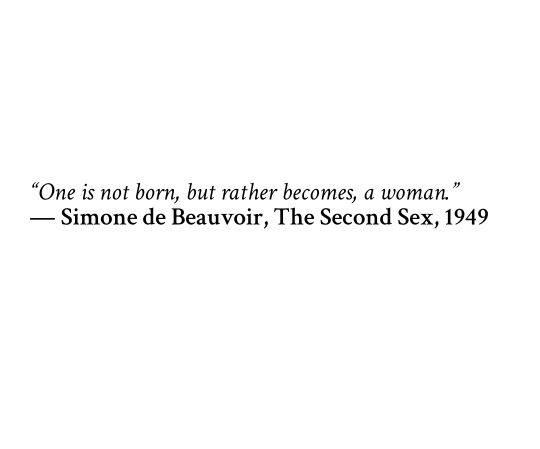
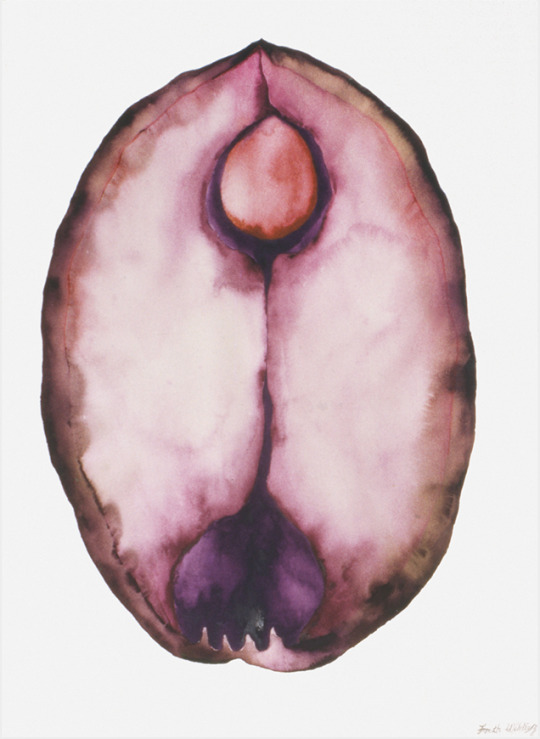
Faith Wilding, Peach Cunt, 1971. Watercolor on paper.
Contemporary Art - Feminist Art Movement
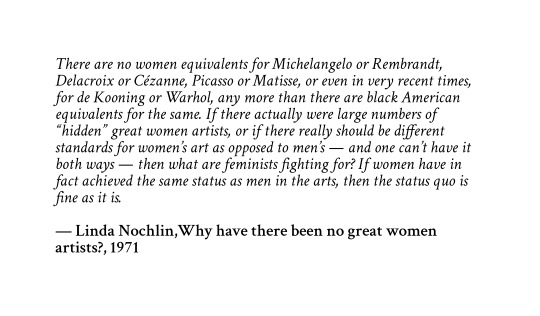


Carrie Mae Weems, The Kitchen Table Series, 1990. Photography.
Contemporary Art - Feminist Art Movement

High school-senior-mom, 1996. Photography.
Family artifact

Nancy Spero, 'Sheela-Na-Gig at Home', 2000. Handprinting and printed collage on paper, installation with underwear and clothesline.
Contemporary Art
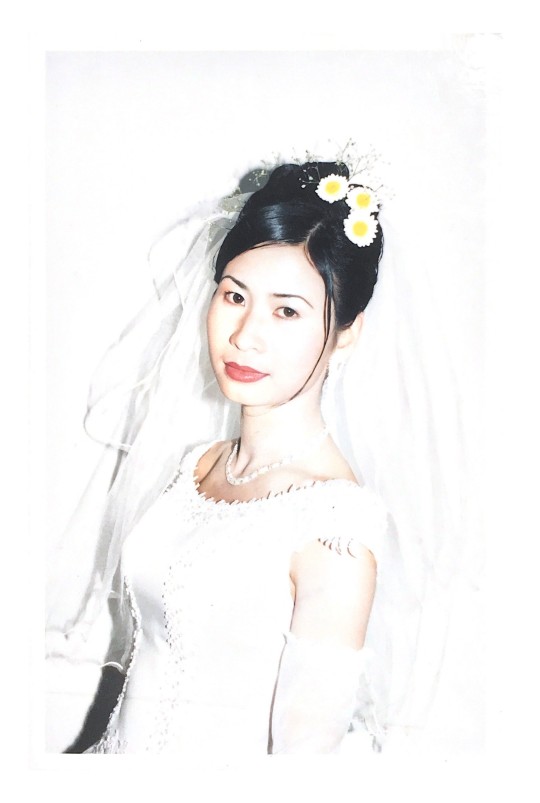
Wedding-day-mom, 2002. Photography.
Family artifact
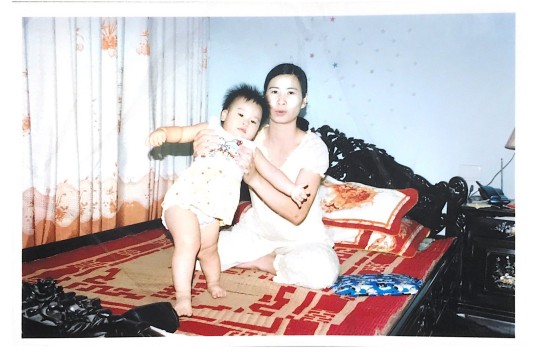
After-I-was-born-mom, 2003. Photography.
Family artifact

Sa’dia Rehman, Divine Guidance, 2010. Sculptural installation.
Contemporary Art
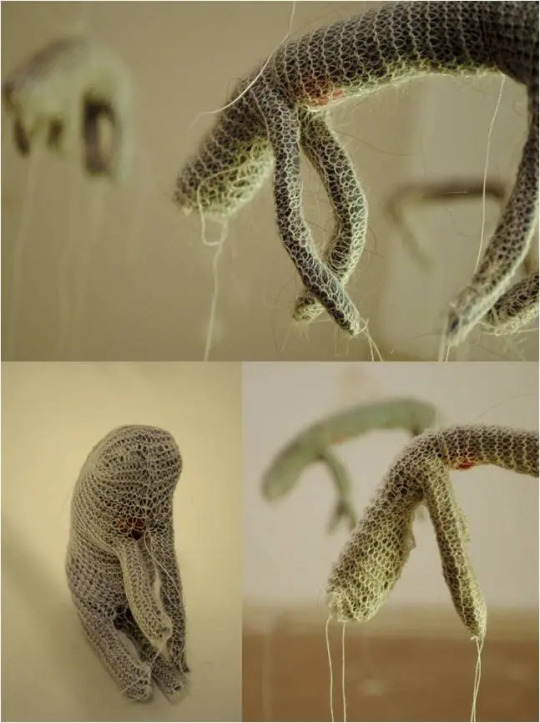
Marcy Chevali, With a Little Pink Spot, 2013. Scuptural installation.
Contemporary Art


Fleabag (TV Show), 2016 - 2019
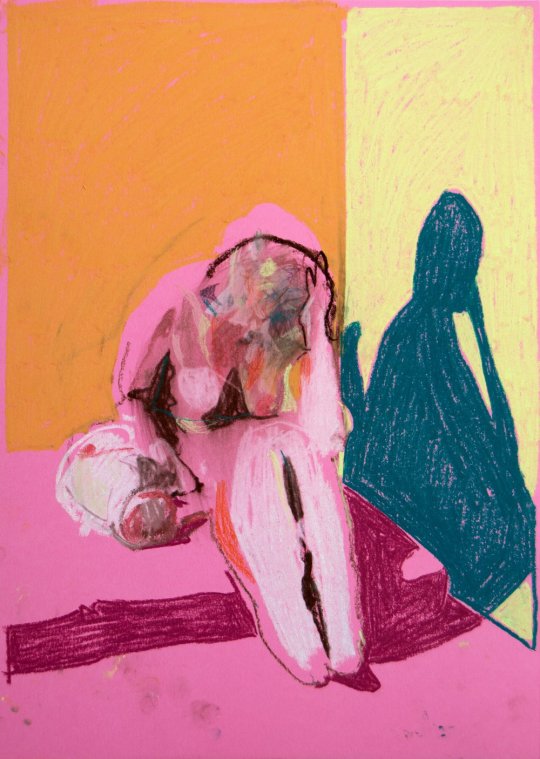
Hester Finch, Motherhood & Pregnancy. Soft pastels on paper.
Contemporary Art
WHEN I SAY THAT WE ARE ALL TEEN GIRLS
by Olivia Gatwood, 2019
what I mean is that when my grandmother
called to ask why I didn’t respond to her letter,
all I heard was, Why didn’t you
text me back? Why don’t you love me?
And how can I talk about my grandmother
without also mentioning that if everyone
is a teen girl, then so are the birds, their soaring
cliques, their squawking throats,
and the sea, of course, the sea,
its moody push and pull, the way we drill
into it, fill it with our trash, take and take
and take from it and still it holds us
each time we walk into it.
What is more teen girl than not being
loved but wanting it so badly
that you accept the smallest crumbs and call
yourself full; what is more teen girl than
my father’s favorite wrench, its eternal loyalty
and willingness to loosen the most stubborn of bolts;
what is more teen girl than my mother’s chewed
nail beds, than the whine of the floorboards in her
house?
What is more teen girl than my dog, Jack,
whose bark is shrill and unnecessary,
who has never once stopped a burglar
or heeled on command but sometimes
when I laugh, his tail wags
so hard it thumps against the wall, sometimes
it sounds like a heartbeat, sometimes I yell at him
for talking too much, for his messy room,
sometimes I put him in pink, striped polos
and I think he feels pretty,
I think he likes to feel pretty,
I think Jack is a teen girl.
and the mountains, oh, the mountains,
what teen girls they are, those colossal show-offs,
and the moon, glittering and distant
and dictating all of our emotions.
My lover’s tender but heavy breath while she sleeps
is a teen girl, how it holds me and keeps
me awake all at once, how I sometimes wish
to silence it, until she turns her body and
the room goes quiet and suddenly I want it back.
Imagine the teen girls gone from our world,
and how quickly we would beg for their return,
how grateful would we be then for their loud
enthusiasm
and ability to make a crop top out of anything.
Even the men who laugh their condescending laughs
when a teen girl faints at the sight of her
favorite pop star, even those men are teen girls,
the way they want so badly to be so big
and important and worshipped by someone.
Pluto, the teen girl, and her rejection
from the popular universe,
and my father, a teen girl, who insists he doesn’t
believe in horoscopes but wants me to tell
him about the best traits of a Scorpio,
I tell him, We are all just teen girls,
and my father, having raised me, recounts the time he
found the box of love notes and condom wrappers I
hid in my closet, all of the bloody sheets, the missing
socks,
the radio blaring over my pitchy sobs,
the time I was certain I would die of heartbreak
and in a moment was in love with a small, new boy,
and of course there are the teen girls,
the real teen girls, huddled on the subway
after school, limbs draped over each other’s shoulders
bones knocking, an awkward wind chime
and all of the commuters, who plug in their
headphones
to mute the giggle, silence the gaggle and squeak,
not knowing where they learned to do this,
to roll their eyes and turn up the music,
not knowing where they learned this palpable rage,
not knowing the teen girls are our most distinguished
professors, who teach us to bury the burst
until we close our bedroom doors,
and then cry with blood in the neck,
foot through the door, face in the pillow,
the teen girls who teach us to scream.

Hester Finch, Burning Nudes. Soft pastels on paper.
Contemporary Art
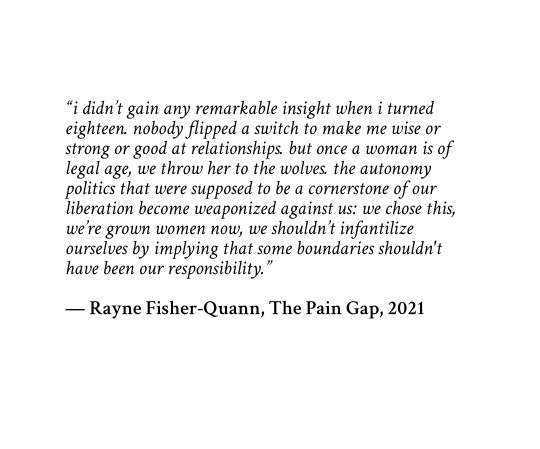
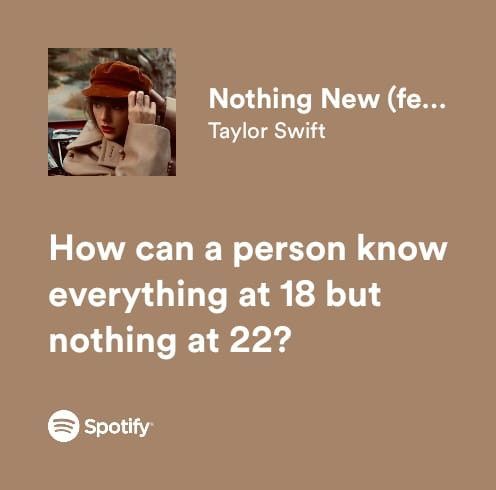
Nothing New, 2021. Taylor Swift ft. Phoebe Bridgers.

Installation view of Sanja Iveković: Works of Heart (1974–2022) at Kunstalle Wien, Vienna, 2022, showing Ženska kuća (Women’s House). 1998–ongoing. Mixed-media installation.
Contemporary Art - Feminist Art Movement
16 notes
·
View notes
Photo
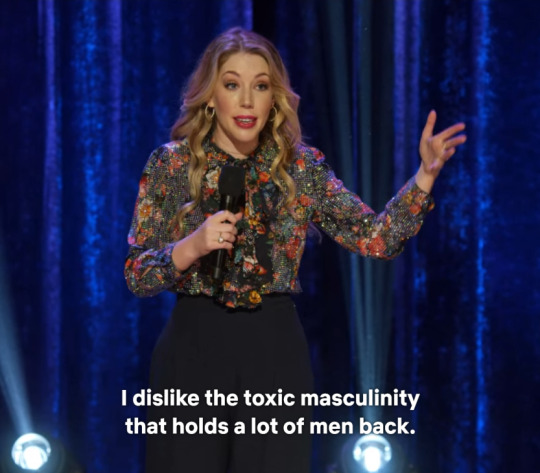
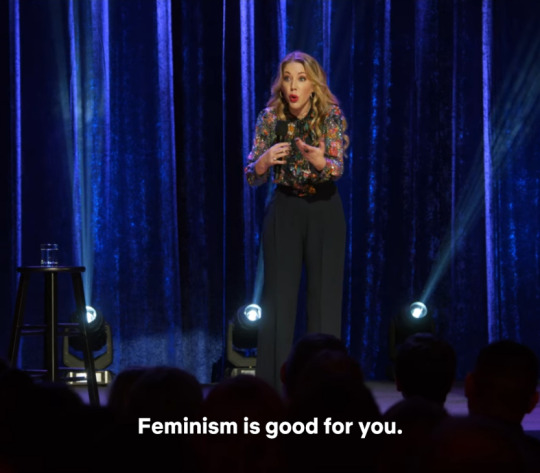
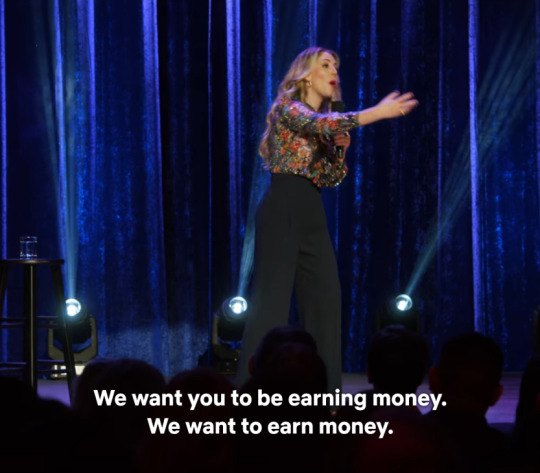

Katherine Ryan: Glitter Room (2019)
"Once upon a time, the Protestant work ethic was a leveling, democratizing attitude and social force. It served as a critique of aristocratic exemption from necessary labor because it insisted that everybody had to justify their consumption of goods by their prior production of value—everybody."
— James Livingston, No More Work (2016)
"When the mob ran Vegas... If you ended up dead in a ditch in the desert, it was probably because you tried to get in the way of the money."
— Ram Denison, Money Machine (2020)
"Why Is Money So Difficult to Discuss? In a word, money is a scary topic."
— L. Randall Wray, Making Money Work for Us
"As a Dionysian sexualist, Sade abolishes the great chain of being, sinking man into the continuum of nature, but he cannot shake off the intellectual hierarchism of his age. [...] Sade’s libertines freely wallow in filth and find no humiliation in being flogged or sodomized in public. The excretory voiding of one person into the mouth of another is Dionysian monologue, a pagan oratory.”
— Camille Paglia, Sexual Personae: Art and Decadence from Nefertiti to Emily Dickinson (1990)
"All savages speak and by speaking they reveal their solidarity with the decency and kindness that are the root of civilisation. Conversely all civilised men are capable of savagery. [...] The Marquis de Sade, rebellious in his imprisonment, had to give his rebellion a voice. He spoke out, as violence itself never does. In his rebellion he had to defend himself, or rather to attack, seeking to fight on the ground of the moral man to whom language belongs."
— Georges Bataille, Erotism: Death and Sensuality (1957)
"What Berlin plausibly argues is that value-pluralism can be used to support a moral minimum, precarious, shifting and ridden with conflicts, which has priority over any political ideal. If we read him in this way, which is consistent with much of his work, Berlin is not so much a theorist of liberty as a philosopher of human decency." — Isaiah Berlin (2013)
"A dispassionate view of Nature showed it to be indifferent to happiness, human or otherwise. Incessant predation, destruction and death are the natural order of things. In view of these facts, Sade posed a question: should not the enlightened individual, liberated from religious delusions, accept this order and revel in it? By doing so, he or she will find pleasure, even as the species as a whole remains sunk in suffering." — Seven Types of Atheism (2018)
“Where Montaigne turns to nature, Pascal turns to God.” — Feline Philosophy (2020)
— John N. Gray
“Your significance doesn’t depend on your position. Your significance doesn’t depend on a title. Your significance depends on the power of the spirit of God working through you.”
— Senator Josh Hawley | Twitter (2023)
"Sublimation and renewed focus on the spiritual isn't always the right response to loneliness."
— LeahLibresco | Twitter (2014)
"We are obliged to enjoy ourselves to pieces, or, more precisely, to consume ourselves to pieces, and in comparison with not so long ago the contemporary drive regulation is reduced to a minimum."
— Paul Verhaeghe, On the New discontents of Civilisation (2015)
"4chan was populated by a group of declassed individuals set so far apart from society and so wholly lacking in identity that they began to obsess over it."
— Dale Beran, It Came From Something Awful
"You know, there's kind of two options the left has for disillusioned men. The first is the Marxist promise of economic revolution. [...] So while feminism tells women you hate your body and you’re constantly doubting yourself because society did this to you and needs to change, we kind of just tell men: ‘you’re lonely and suicidal because you’re toxic. Stop it!’ We tell them they're broken without really telling them how to fix themselves."
— ContraPoints, “Men” | YouTube (2019)
“Maybe human work at its most elementary, work, as it were, at the zero level, is the work of cleaning the traces of a stain. The work of erasing the stains, keeping at bay this chaotic netherworld, which threatens to explode at any time and engulf us. […] What’s the source of Chaplin’s comic genius? What’s the archetypal comic situation in Chaplin’s films? It’s being mistaken for somebody or functioning as a disturbing spot, as a disturbing stain.”
— Slavoj Žižek, Pervert’s Guide to Cinema (2006)
“To fight against the desire to be erased.”
— Kate Zambreno, Heroines (2012)
“Humiliation strips people of their self-esteem and reduces them to vulnerable creatures rather than significant beings in a world of meaning.”
— Solomon/Greenberg/Pyszczynski, The Worm at the Core: On the Role of Death in Life (2015)
"[”Closer” is] super negative and super hateful. It’s ‘I am a piece of shit and I am declaring that and if you think you want me, here I am.’”
— Trent Reznor (1995), found in Adam Steiner's Into The Never (2020)
"If intimacy says, “We’re close and the same,” and independence says, “We’re separate and different,” it is easy to see that intimacy and independence dovetail with connection and status. [...] Biological influence does not mean patterns of behavior can’t be changed. And cultural influences are extremely deep and difficult to change."
— Deborah Tannen, You Just Don’t Understand: Women and Men in Conversation (1990/2001)
5 notes
·
View notes
Text

My current Art Stuff Collection Including: Lotta Lemon Lime, Starry Sky, Sassy Starberry, Frutie Cutie, Charmin Cherry, Electric Apple, Stylin Strawberry and Sherbet Shake
1996-2004
I am so grateful I was able to find these for sale and that I had the money to get them. I had every item in this picture when I was in middle school (1998-2003)but by early college (2008) I had either thrown them away or gave them away . The only original item I still have is the Starry Sky Lip Gloss Pot. I got that in 6th grade and loved it so much I could never get rid of it (thank god bc you cant find this for sale ever, ive never even seen a picture of this in my years of searching)
They all smell great except the Melon Mania Shower Gel.
#bath and body works art stuff#art stuff#1990s bath and body works#1990s art stuff#1990s kids#1990s nostalgia#y2k bath and body works#early 2000s bath and body works#vintage bath and body works#bath and body works collection#y2k nostalgia#y2k kids#y2k childhood#1990s childhood#1990s roll on glitter#y2k roll on glitter#1990s glitter body sray1#1990s glitter shower gel#frutie cutie#sassy starberry#starry sky#stylin strawberry#glittere#electric apple#apple#cherry#early 2000s nostalgia#early 2000s roll on glitter#roll on glitter#glitter
70 notes
·
View notes
Text
Bird
The moon plays horn, leaning on the shoulder of the dark universe to the infinite glitter of chance. Tonight I watched Bird kill himself, larger than real life. I've always had a theory that some of us are born with nerve endings longer than our bodies. Out to here, father than his convoluted scales could reach. Those nights he played did he climb the stairway of forgetfulness, with his horn, a woman who is always beautiful to strangers? All poets understand the final uselessness of words. We are chords to other chords to other chords, if we're lucky, to melody. The moon is brighter than anything I can see when I come out of the theater, than music, than memory of music, or any mere poem. At least I can dance to "Ornithology" or sweet-talk beside "Charlie's Blues," but inside this poem I can't play a horn, hijack a plane to somewhere where music is the place those nerve endings dangle. Each rhapsody embodies counterpoint, and pain stuns the woman in high heels, the man behind the horn, sings the heart. To survive is sometimes a leap into madness. The fingers of saints are still hot from miracles, but can they save themselves? Where is the dimension a god lives who will take Bird home? I want to see it, I said to the Catalinas, to the Rincons, to anyone listening in the dark. I said, Let me hear you by any means: by horn, by fever, by night, even by some poem attempting flight home.
Joy Harjo, In Mad Love and War (1990)
3 notes
·
View notes
Text
Happy birthday, Tom Waits (born in December 1949)
Happy birthday, Tom Waits (born in December 1949)Best Sheet Music download from our Library.Please, subscribe to our Library.Tom Waits' DiscographyFilmography (on Wikipedia)Tom Waits - "This One's From The Heart"Browse in the Library:
Happy birthday, Tom Waits (born in December 1949)
Thomas Alan Waits (born December 7, 1949) is an American musician, composer, songwriter, and actor. His lyrics often focus on society's underworld and are delivered in his trademark deep, gravelly voice. He began in the folk scene during the 1970s, but his music since the 1980s has reflected the influence of such diverse genres as rock, Delta blues, opera, vaudeville, cabaret, funk, hip hop and experimental techniques verging on industrial music. As per The Wall Street Journal, Waits “has composed a body of work that’s at least comparable to any songwriter’s in pop today. A keen, sensitive and sympathetic chronicler of the adrift and downtrodden, Mr. Waits creates three-dimensional characters who, even in their confusion and despair, are capable of insight and startling points of view. Their stories are accompanied by music that’s unlike any other in pop history.” Tom Waits was born and raised in a middle-class family in Pomona, California. Inspired by the work of Bob Dylan and the Beat Generation, he began singing on the San Diego folk circuit. He relocated to Los Angeles in 1972, where he worked as a songwriter before signing a recording contract with Asylum Records. His first albums were the jazzy Closing Time (1973), The Heart of Saturday Night (1974) and Nighthawks at the Diner (1975), which reflected his lyrical interest in poverty, criminality and nightlife. He repeatedly toured the United States, Europe and Japan, and found greater critical and commercial success with Small Change (1976), Blue Valentine (1978) and Heartattack and Vine (1980). During this period, Waits entered the world of film, acting in Paradise Alley (1978), where he met a young story editor named Kathleen Brennan. He composed the soundtrack for Francis Ford Coppola's One from the Heart (1982) and made cameos in several subsequent Coppola films.

In 1980, Waits married Brennan, split from his manager and record label, and moved to New York City. With Brennan's encouragement and frequent collaboration, he pursued a more eclectic and experimental sound influenced by Harry Partch and Captain Beefheart, as heard on the loose trilogy Swordfishtrombones (1983), Rain Dogs (1985) and Franks Wild Years (1987). Waits starred in Jim Jarmusch's Down by Law (1986), lent his voice to his Mystery Train (1989), composed the soundtrack for his Night on Earth (1991) and appeared in his Coffee and Cigarettes (2003). He collaborated with Robert Wilson and William S. Burroughs on the "cowboy opera" The Black Rider (1990), the songs for which were released on the album The Black Rider. Waits and Wilson collaborated again on Alice (2002) and Woyzeck (2000). Bone Machine (1992) and Mule Variations (1999) won Grammys for Best Alternative Music Album and Best Contemporary Folk Album, respectively. In 2002, the songs from Alice and Wozzeck were recorded and released on the albums Alice and Blood Money. Waits went on to release Real Gone (2004), the compilation Orphans: Brawlers, Bawlers & Bastards (2006), the live album Glitter and Doom Live (2009) and Bad as Me (2011).

Waits has influenced many artists and gained an international cult following. His songs have been covered by Bruce Springsteen, Tori Amos, Rod Stewart and the Eagles and he has written songs for Johnny Cash and Norah Jones, among others. In 2011, he was inducted into the Rock and Roll Hall of Fame. Introducing him, Neil Young said: "This next man is indescribable, and I'm here to describe him. He's sort of a performer, singer, actor, magician, spirit guide, changeling… I think it's great that the Rock and Roll Hall of Fame has recognized this immense talent. Could have been the Motion Picture Hall of Fame, could have been the Blues Hall of Fame, could have been the Performance Artist Hall of Fame, but it was the Rock and Roll Hall of Fame that recognized the great Tom Waits." In accepting the award, Waits mused, "They say that I have no hits and that I'm difficult to work with. And they say that like it's a bad thing!" Musical style Per Bowman, Tom Waits: has never been of his time, ahead of his time, or, for that matter, locked into any particular time. An outsider artist before the term was in common use, Waits has been enamored, at various points in his career, with the cool of 1940s and 1950s jazz; the 1950s and 1960s word-jazz and poetry of such Beat and Beat-influenced writers as Jack Kerouac, Lord Buckley, and Charles Bukowski; the primal rock & roll crunch of the Rolling Stones; the German cabaret stylings of Kurt Weill; the postwar, alternate world of invented instruments and rugged individualism of avant-garde composer Harry Partch; the proto-metal blues of 1950s and 1960s Howlin' Wolf and their extension into the world of Captain Beefheart's late-1960s avant-rock; the archaic formalism of 19th-century parlor ballads; Dylan's early- and mid-sixties transformation of the possibilities of language in the worlds of both folk and rock; the elegance of pre-war Irving Berlin, Cole Porter, and Hoagy Carmichael; the sophistication of postwar Frank Sinatra; and, more recently, the bone-crushing grooves of 1980s and 1990s funk and hip-hop. Indeed, the art of Tom Waits has altogether transcended time and, to some degree, place. Asked about the distinction between words and music, he says: "I'm still a word guy. I'm drawn to people who use a certain vernacular and communicate with words. Words are music, really. I mean, people ask me, 'Do you write music or do you write words?' But you don't really, it's all one thing at its best." His work was influenced by his voracious reading and by conversations that he overheard in diners. In addition to Kerouac and Bukowski, literary influences include Nelson Algren, John Rechy and Hubert Selby Jr. Bowman notes the influence of crime writers like Dashiell Hammett and John D. Macdonald. Tom Waits says that "for a songwriter, Dylan is as essential as a hammer and nails and saw are to a carpenter." Musical influences include Randy Newman and Dr. John. He has praised Merle Haggard: "Want to learn how to write songs? Listen to Merle Haggard." He is an opera lover, and recalls hearing Puccini's "Nessun dorma" "in the kitchen at Coppola's with Raul Julia one night, and it changed my life, that particular Aria… It was like giving a cigar to a five-year old." A jazz influence is Thelonious Monk: "He almost sounded like a kid taking piano lessons. I could relate to that when I first started playing the piano, because he was decomposing the music while he was playing it." Regarding his eclectic influences, he says: "I draw from all kinds of sources and I listen to a lot of things … I would recommend that when you are starting out that you stay with your own stuff and find out who you are. And stay with you mining your own unique qualities rather than trying to sound like somebody else. I mean you do start out like somebody else, and slowly you become yourself, so it's kinda like life, you know?" Waits described his voice as being "the sand in the sandwich." By 1982, Waits's musical style shifted; Hoskyns noted that this new style "was fashioned out of diverse and disparate ingredients." This new style was influenced by Beefheart and Partch. Noting that he had a "gravelly timbre", Humphries characterized Waits's voice as one that "sounds like it was hauled through Hades in a dredger." His voice was described by critic Daniel Durchholz as sounding as though "it was soaked in a vat of bourbon, left hanging in the smokehouse for a few months, and then taken outside and run over with a car." Rolling Stone also noted his "rusted plow-blade voice." One of Waits's own favorite descriptions of his vocal style was "Louis Armstrong and Ethel Merman meeting in Hell." Humphries cited him, alongside Newman, Kris Kristofferson and John Prine, as a number of U.S. singers who followed Dylan in breaking away from conventional styles of popular music and singing with their "distinctive" voices. Tom Waits can sing in falsetto, as heard on "Shore Leave", "Temptation" and "All Stripped Down". Waits said he couldn't sing in falsetto until after he quit smoking, adding "Nobody does it like Mick Jagger; nobody does it like Prince." He is known for his eclectic use of instruments, some of his own devising. On Swordfishtrombones, his orchestration included talking drums, bagpipes, banjo, bass marimba and glass harmonica; on Rain Dogs, accordion and harmonium; on Franks Wild Years, glockenspiel, Mellotron, Farfisa and Optigan; on Bone Machine and Mule Variations, the Chamberlin; on The Black Rider, the singing saw; on Alice, the Stroh violin; on Blood Money, a 57-whistle pneumatic calliope and an Indonesian seedpod. He explains "I use things we hear around us all the time, built and found instruments. Things that aren't normally considered instruments: dragging a chair across the floor or hitting the side of a locker real hard with a two-by-four, a freedom bell, a brake drum with a major imperfection, a police bullhorn. It's more interesting. I don't like straight lines. The problem is that most instruments are square and music is always round." As he later put it, "A lot of things are instruments and they don't even know it." Tom Waits' Discography Closing Time (1973) The Heart of Saturday Night (1974) Nighthawks at the Diner (1975) Small Change (1976) Foreign Affairs (1977) Blue Valentine (1978) Heartattack and Vine (1980) Swordfishtrombones (1983) Rain Dogs (1985) Franks Wild Years (1987) Bone Machine (1992) The Black Rider (1993) Mule Variations (1999) Alice (2002) Blood Money (2002) Real Gone (2004) Bad as Me (2011) Filmography (on Wikipedia)
Tom Waits - "This One's From The Heart"
https://www.youtube.com/watch?v=P40vLY45nQQ "This One's From The Heart" by Tom Waits from the 'One From The Heart' soundtrack Read the full article
#SMLPDF#noten#partitionmusicale#partitura#sheetmusicdownload#sheetmusicscoredownloadpartiturapartitionspartitinoten楽譜망할음악ноты#spartiti
0 notes
Text
Three Teresas: the comparison

I used to have rather a lot of Teresas, when my collection was larger, but in the wake of dealing with my mother's massive collection, I had pared mine to bare bones, leaving me with only a single Teresa. That's the gal on the right. She is from 2012 Rainbow Fashionistas, Wave 2: she's missing her glitter streaks in her hair because they annoyed me and I cut them out. I found her in a thrift store in Phoenix and sewed her an outfit as a present for my mother, so she ended up with the spot as The Original Teresa. However, this model of Teresa has the 2003 Summer head mold.
When I found the lovely rainbow-haired lady on the left at a going-out-of-business antique shop in Coarsegold, I was delighted. She has the 1990 Teresa head mold, which I consider to be the true Teresa face -- and she's articulated, which was rare in the 1990s. She is 1997 Hula Hair Teresa. Since she needs her own name, she can be Nerissa, which means "sea nymph." (If I've called her something else in a prior post, ignore it. Retconning is a way of life here. She wants to be Nerissa.)
Having two head molds raised the question: why do I not have (and have never, ever had) any version of the 2006 Teresa head mold? That's because it was barely used! It went with the "hobbit" body, which didn't turn up in thrift stores when I was shopping in the 2010s (they were instead flooded with Fashionistas).
I've wanted a Hobbit-bodied doll for quite a while, so I found one on eBay that I liked (2007 Beach Glam) and bought her. She is to be called Mariposa, as that seems like a Hobbit-ish name that also honors her Hispanic heritage.
Since this looks like a long post, let's do the body comparison after the jump.


Nerissa is the only one who has a shot at standing on her own, thanks to reasonably proportioned flat feet. She has the tiny waist that people complained about, but look at how healthy her thighs appear, compared to ultra-skinny Fashionista Teresa!
I know it's traditional to hate the Hobbit body, but almost 20 years later, with a lot of large-headed 10" doll lines under the bridge, it doesn't seem particularly bad. She is difficult to dress, as the body type didn't last long enough to affect clone-line doll clothes, so a lot of my Dollar General and Family Dollar bargain outfits are too small around for her.
What's shocking is how emaciated Fashionista Teresa looks, despite having the larger waist and smaller bust of the era. Her thigh gap is a mile wide, and her ankles are ridiculously small.

Rear view reminds us of how primitive Barbie articulation was in the 1990s. Fsahionista Teresa has been to the gym to get that high, round butt.

Look how ridiculously small Fashionista Teresa's feet are, over on the right!
Nerissa can stand on her own, as her feet are flat and proportionate to her height. Mariposa has a slight heel lift that throws her off balance. Teresa has the most impractical little feet -- and of course, that's what modern Barbie shoes are sized for!

Poor Mariposa is left out of the posing contest, as the best she can offer is click knees. Nerissa has surprisingly good articulation: although she has no wrist movement, her legs do a tighter bend than Teresa's. But Teresa can lift her arms higher.

Getting them clothed is an interesting process. The stretchy rainbow scale dress fits Nerissa perfectly, so she's happy. Teresa is wearing a Dollar Tree top with a skirt that I assume my mother handmade. Mariposa fits reasonably well into a Dollar General jumpsuit (which is such a wardrobe stable that I somehow have two of them).
Having my Big Three of Teresas raises the inevitable question: have I really got every Teresa head mold?
Technically, no. I've decided to rule out Dreamhouse Teresa (2012) on the grounds that Dreamhouse was a narrow universe; which also allows me to skip Dream Besties Teresa (who is cute, but I'm seriously not going down the big-head road this time). However, there was a Spanish-Hispanic head mold copyright 1982 that was used for a few Teresas in the very late 1980s. She looks Afro-Latino, and she's cute! And the one on Bay that fits my budget has leg-spotting, so I'm going to hold off to see if she turns up in a lot with Jazzy and Courtney of the same era. A person can hope, right?

#mattel teresa#hula hair teresa#fashionista teresa#beach glam teresa#hobbit body barbie#fashion dolls
0 notes
Text

“New York glitter-punk outfit The Voluptuous Horror of Karen Black began life as a near-death experience. Shortly before forming the band in 1990, front woman Kembra Pfahler was strangled in a brutal mugging and almost died. While recovering, battered and zonked on painkillers, she watched the 1975 horror movie Trilogy of Terror on television. The film stars Karen Black, the quirky cross-eyed actress whose wildly erratic career encompasses everything from some of the key American films of the 1970s (Easy Rider, Five Easy Pieces, Nashville, Day of the Locust) to mainstream Hollywood schmaltz (Airport 1975) to obscure straight-to-VHS exploitation / horror dreck. In Trilogy's best-known segment, Black is stalked by and eventually possessed by a cursed malevolent Zuni fetish doll which has come to life. [SPOILER ALERT] It concludes with a final jolting image of the now-crazed and murderous, knife-wielding Black grinning blank-eyed and maniacal to the camera to reveal a mouthful of razor-sharp teeth identical to the Zuni doll’s … In her traumatized state, that savage and disturbing image -- combined with almost dying -- made a powerful impression on Pfahler. Inspired, she would blacken out her teeth, conceal her natural fine-featured beauty under cadaverous make-up and take to the stage clad in little more than a pair of thigh boots and a coat of body paint. Pfahler’s look can suggest a character from a John Waters film given an “ugly make-over”: think of Divine as the acid-scarred Dawn Davenport in Female Trouble (1974), an image which seems to anticipate TVHKB’s twisted glamour. Like Divine before her, Pfahler shaves off her eyebrows and shaves back her hairline to accommodate her extreme eye make-up. “I want to be both very beautiful and very repulsive,” Pfahler would explain to The Toronto Star in 1994.”
/ From my own blog post “The Voluptuous Horror of Karen Black at Meltdown Festival 10 August 2012” /
Born on this day 62 years ago (4 August 1961): California girl-turned-NYC provocative performance artist, Cinema of Transgression actress and Voluptuous Horror of Karen Black voodoo-dolly singer Kembra Pfahler. Photo of Pfahler by me!
#voluptuous horror of karen black#lobotomy room#kembra pfahler#performance artist#punk#glitter punk#performance art#new york punk#trilogy of terror#karen black
63 notes
·
View notes
Text


[178]
Makeup Jack Spoon. Hara Glitter eyebags

Clothing [Brior] Delina Set

Accessories ! 1990 - Amina Set

Body Reborn by EBODY v1.69.6

Pose mirinae: makima
#Jack Spoon#Brior#1990#Mirinae#SECONDLIFE#METAVERSE#SECONDLIFEBLOGGER#SLBLOGGER#BLOGGING#SECONDLIFEPHOTOGRAPHY#VIRTUAL#SL#LELUTKA#REBORN#EBODY#VOID
1 note
·
View note